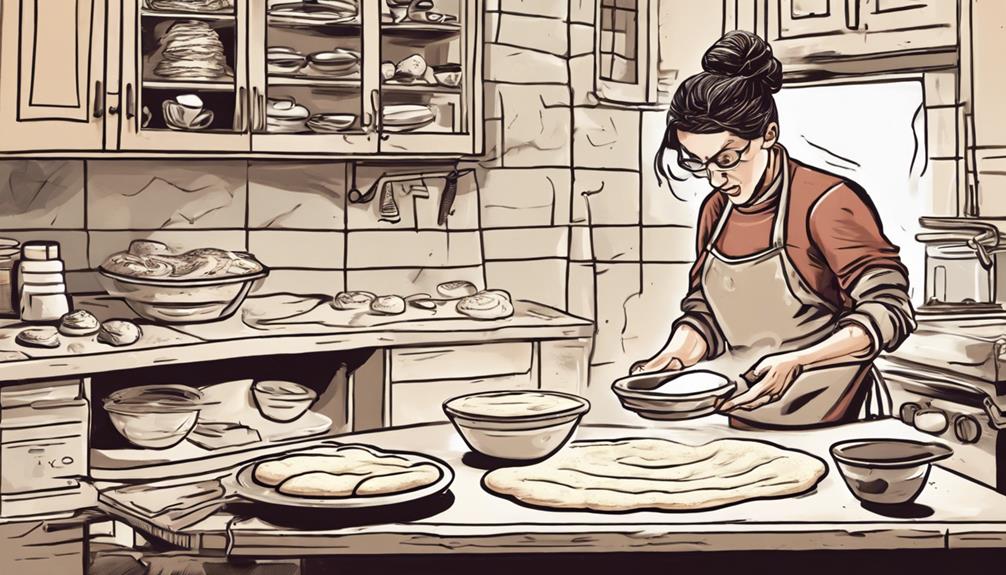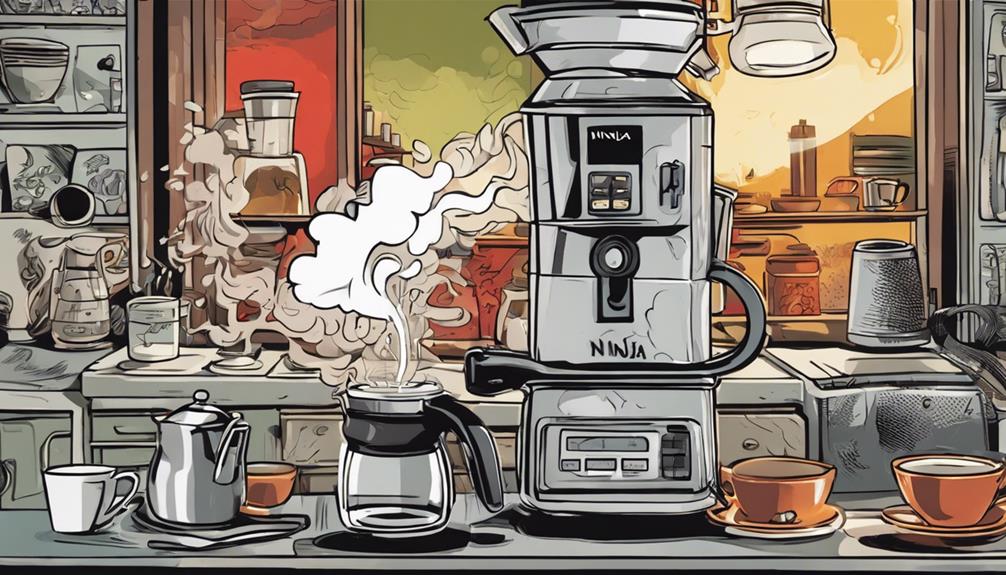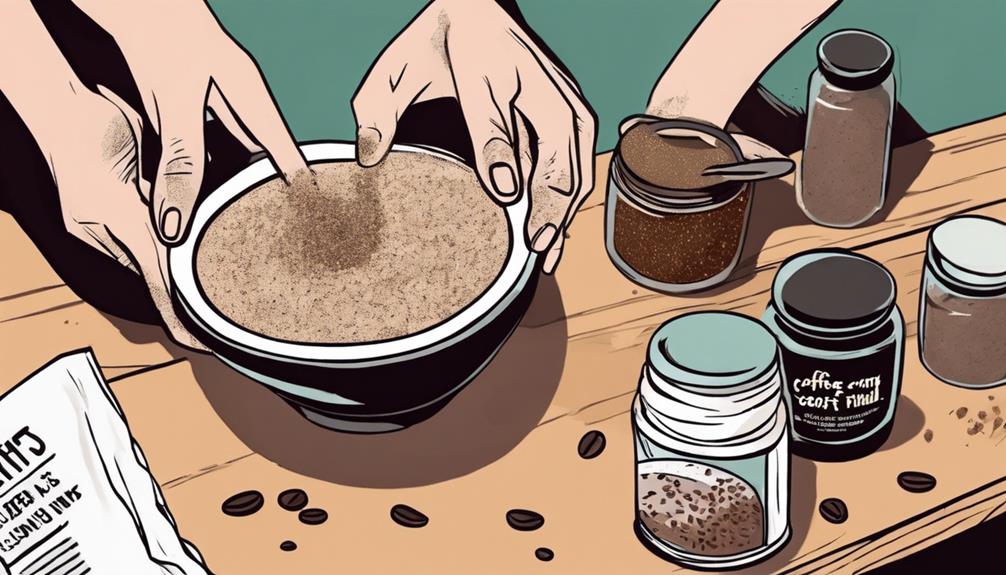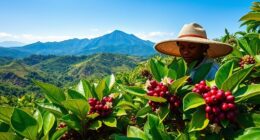To make coffee buns at home, opt for bread flour to ensure a sturdy structure. The high protein content helps create more gluten for a chewy and light texture. Chill the butter before shaping for the perfect consistency. Keep the coffee topping in the fridge for uniformity. Treat yourself to freshly baked buns for the ultimate flavor. Crisp up any leftovers by reheating them. Get the recipe for quick access, heat up the oven, form the dough into fluffy buns, and savor them with a cup of coffee. Keep any remaining buns in an airtight container to maintain their freshness. For a decadent topping, dissolve coffee in water, combine it with butter and sugar, then pipe it on top for a delicious touch.
Key Takeaways
- Use bread flour for chewier texture and better structure.
- Freeze butter to maintain shape during filling.
- Refrigerate coffee topping for ideal consistency.
- Space buns properly on tray for even baking.
- Indulge in freshly baked buns for prime enjoyment.
Flour Selection for Coffee Buns
When making Coffee Buns at home, opt for bread flour over all-purpose flour for the best results. The high protein content in bread flour is essential for producing more gluten, which gives the buns their desired structure. This gluten formation is vital, especially when dealing with a dough that contains a high butter content, as it allows the buns to rise higher and have a better texture.
The bread flour's ability to absorb more liquid ensures that the dough achieves the right consistency for the Coffee Buns. The gluten content in bread flour also contributes to a chewier texture and airy crumbs, enhancing the overall mouthfeel of the buns.
It's this perfect balance of ingredients like bread flour that sets these buns apart and makes them a delightful treat for any coffee lover. So, when baking these buns, remember that the choice of flour directly impacts the dough's elasticity, rise, and ability to hold its shape during baking.
All-Purpose Vs. Bread Flour
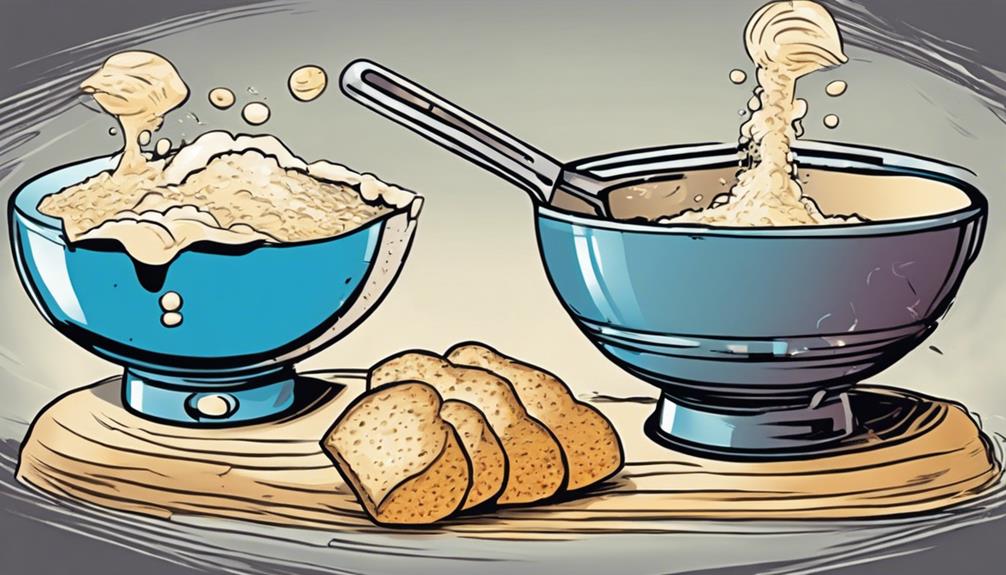
For Coffee Buns, understanding the differences between all-purpose and bread flour is essential to achieving the desired texture and structure in your baked goods. Bread flour contains a higher protein content than all-purpose flour, resulting in a chewier texture and better dough structure for your coffee buns. The increased gluten content in bread flour allows the dough to rise higher and maintain its shape, which is vital when dealing with the rich butter content in the recipe.
The increased gluten content in bread flour allows the dough to rise higher and maintain its shape, which is vital when dealing with the rich butter content in the recipe.
While all-purpose flour can be a more budget-friendly option, it can also be used as a substitute for bread flour in your coffee bun recipe. However, be aware that this substitution may slightly alter the texture of your buns. Bread flour excels in producing more gluten and absorbing more liquid, making it ideal for recipes like coffee buns that require a robust dough structure.
In essence, while swapping bread flour for all-purpose flour or vice versa may not drastically affect the end product, using bread flour typically yields coffee buns with a chewier and more airy crumb.
Tips for Perfect Kopi Roti
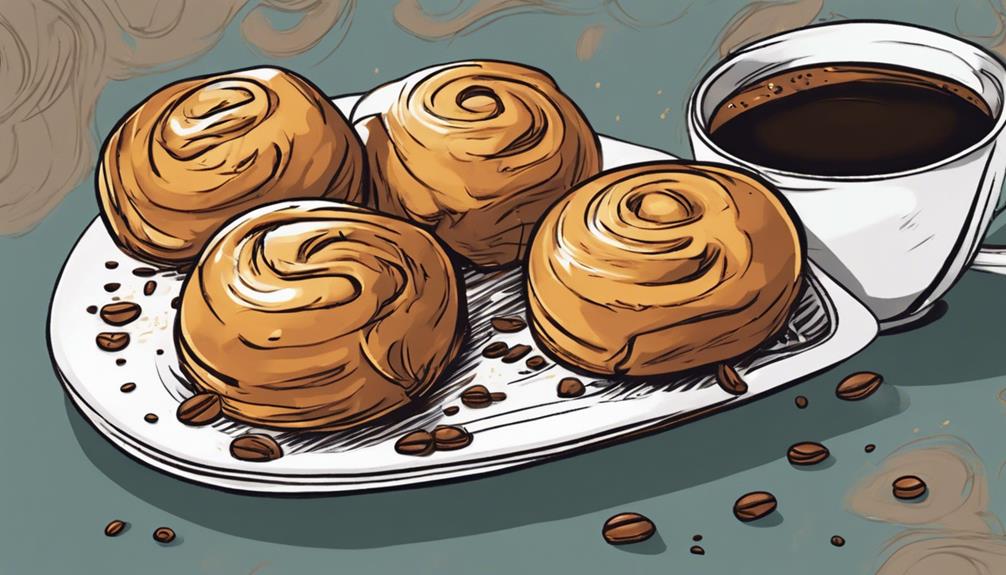
To achieve ideal Kopi Roti, freeze the butter for the filling to prevent melting during shaping.
When making these delightful coffee buns, remember to refrigerate the coffee topping to maintain its optimal consistency.
For the best experience, indulge in your coffee buns freshly baked to enjoy their prime texture.
If you have leftover buns or want to restore their crispiness, simply reheat them for 10 minutes.
Additionally, ensure proper spacing between the buns on the baking sheet to allow for expansion during rising and baking.
These tips will help you master the art of creating delicious Kopi Roti at home.
Printable Coffee Buns Recipe
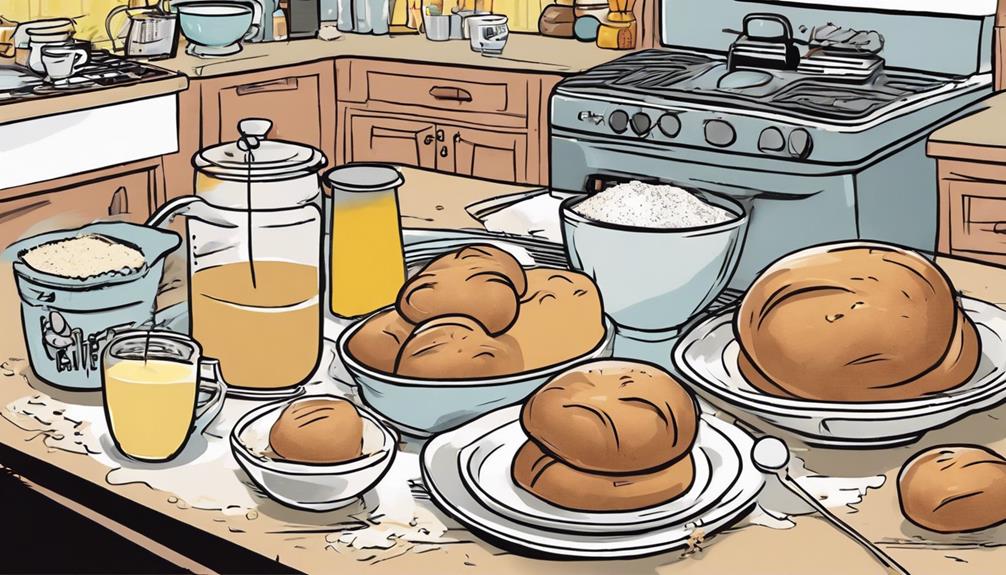
Consider utilizing the downloadable version of the coffee buns recipe for convenient reference during the baking process. This printable recipe simplifies the steps into manageable tasks, ensuring you have all the necessary ingredients and instructions at your fingertips.
Start by preheating your oven and preparing a baking tray lined with parchment. The recipe will guide you through combining butter and sugar until it's light and fluffy, forming the base for the buns' buttery goodness.
Divide the dough into equal pieces, shaping them into soft and fluffy buns that will fill your kitchen with a delightful aroma as they bake. Once out of the oven, let the buns cool before enjoying them with a cup of coffee.
Store any leftovers in an airtight container at room temperature to maintain their freshness. With this printable recipe, baking delicious coffee buns at home has never been easier!
How to Make Coffee Buttercream
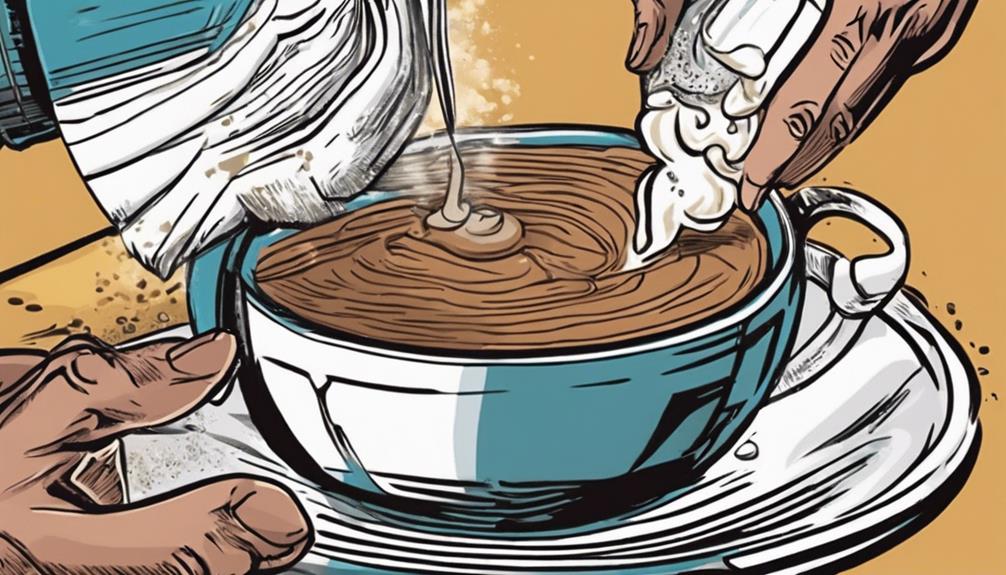
Enhance the flavor of your coffee buns by preparing a rich and creamy coffee buttercream topping.
To make the perfect coffee buttercream topping for your roti buns, follow these simple steps:
- Dissolve the coffee powder: Start by dissolving coffee powder in hot water to infuse the buttercream with a rich coffee flavor.
- Cream the butter: Add the softened butter to the mixture and cream it together with sugar until smooth.
- Incorporate coffee and flour: Make sure to incorporate the dissolved coffee and sifted cake flour into the mixture for a flavorful and creamy consistency.
- Transfer to a piping bag: Once your coffee buttercream topping is ready, transfer it into a piping bag for easy and precise application on top of your buns before baking.
Frequently Asked Questions
How Do You Reheat Coffee Buns?
To reheat coffee buns, pop them in a toaster or airfryer for a few minutes. This way, you'll restore the crispiness without making them soggy. Avoid microwaving to keep the texture just right. Enjoy within days for the best taste!
Can You Freeze Roti Boy?
Yes, you can freeze Roti Boy to extend its shelf life and preserve its freshness. Wrap it in plastic or foil before freezing. Thaw at room temperature or reheat in the oven for a crispy texture.
Where Did Kopi Roti Originate?
You should know where kopi roti originated. In 2003, Malaysia birthed this delight by PappaRoti. It's a taste journey with caramelized coffee cream and a hidden butter pocket. Let's cherish its heritage!
How Many Calories Are in a Coffee Bun?
A coffee bun typically ranges from 250-300 calories, varying by size and ingredients. Enjoy them in moderation as an occasional treat due to their calorie density. Keep an eye on your overall calorie intake for balance.
Conclusion
To sum up, baking coffee buns at home is like creating a warm hug in the form of a delicious treat. With the right flour selection, a perfect kopitiam flavor, and a creamy coffee buttercream, you can easily recreate this beloved snack in your own kitchen.
So grab your apron, preheat your oven, and get ready to indulge in the blissful aroma of freshly baked coffee buns. The sweet and savory combination of rich coffee and buttery dough is truly irresistible. As you knead the dough, the tantalizing scent of warm coffee beans infuses the entire kitchen, creating a cozy and inviting atmosphere. Baking coffee beans for flavor adds an extra depth and complexity to these delectable treats, making them a perfect indulgence for any time of day. Get ready to savor every bite of these delicious coffee buns, and be prepared to share the recipe with anyone who tries them!
Happy baking!
